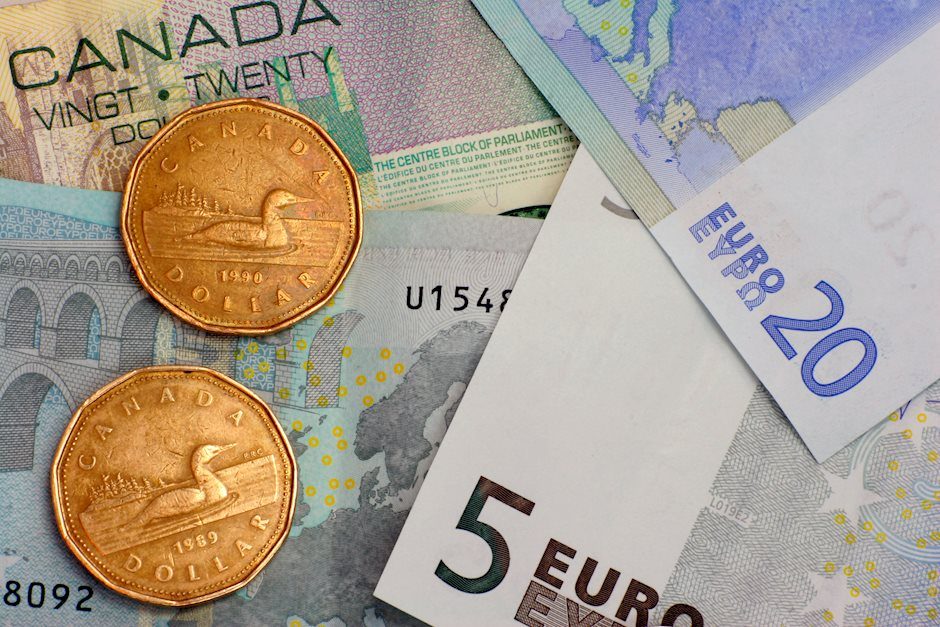EUR/CAD finds interim support near 1.4800, downside bias stays afloat
- EUR/CAD gauges a temporary cushion near 1.4800, however, more downside looks likely.
- The ECB is expected to reach a neutral rate by the first half of 2025.
- Investors expect the BoC to cut interest rates by 50 bps in December.

The EUR/CAD pair discovers temporary support near the round-level support of 1.4800 in European trading hours on Wednesday. The asset finds an interim cushion. However, the downside bias remains intact as US President-elected Donald Trump’s tariff policies are expected to result in a trade war between the Eurozone and the United States administration.
In the election campaign, Trump vowed to raise tariffs by 10% universally and mentioned that the Euro (EUR) bloc would "pay a big price" for not buying enough American exports. The impact is seen denting German’s output by 1%, which is Eurozone’s largest nation, according to European Central Bank (ECB) policymaker and President of the Bundesbank Joachin Nagel.
On Tuesday, Governing Council Member and Bank of Finland Governor Olli Rehn suggested that Europe should position itself better for Trump’s administration at a conference in London. On the interest rate outlook, Rehn said the central bank is heading towards the neutral rate and is seen reaching by the first half of the next year but the pace will be dependent on the overall assessment of dynamic factors at each meeting.
"Current market data and simple maths seem to imply that we would leave restrictive territory sometime in the spring/winter next year 2025," Rehn said, Reuters reported.
Meanwhile, the Canadian Dollar (CAD) has been underpinned by market participants against the Euro for the past few weeks but its own outlook against other major currencies is downbeat as the Bank of Canada (BoC) is expected to cut interest rates again by 50 basis points (bps) to 3.25% in the December meeting.
Euro FAQs
The Euro is the currency for the 19 European Union countries that belong to the Eurozone. It is the second most heavily traded currency in the world behind the US Dollar. In 2022, it accounted for 31% of all foreign exchange transactions, with an average daily turnover of over $2.2 trillion a day. EUR/USD is the most heavily traded currency pair in the world, accounting for an estimated 30% off all transactions, followed by EUR/JPY (4%), EUR/GBP (3%) and EUR/AUD (2%).
The European Central Bank (ECB) in Frankfurt, Germany, is the reserve bank for the Eurozone. The ECB sets interest rates and manages monetary policy. The ECB’s primary mandate is to maintain price stability, which means either controlling inflation or stimulating growth. Its primary tool is the raising or lowering of interest rates. Relatively high interest rates – or the expectation of higher rates – will usually benefit the Euro and vice versa. The ECB Governing Council makes monetary policy decisions at meetings held eight times a year. Decisions are made by heads of the Eurozone national banks and six permanent members, including the President of the ECB, Christine Lagarde.
Eurozone inflation data, measured by the Harmonized Index of Consumer Prices (HICP), is an important econometric for the Euro. If inflation rises more than expected, especially if above the ECB’s 2% target, it obliges the ECB to raise interest rates to bring it back under control. Relatively high interest rates compared to its counterparts will usually benefit the Euro, as it makes the region more attractive as a place for global investors to park their money.
Data releases gauge the health of the economy and can impact on the Euro. Indicators such as GDP, Manufacturing and Services PMIs, employment, and consumer sentiment surveys can all influence the direction of the single currency. A strong economy is good for the Euro. Not only does it attract more foreign investment but it may encourage the ECB to put up interest rates, which will directly strengthen the Euro. Otherwise, if economic data is weak, the Euro is likely to fall. Economic data for the four largest economies in the euro area (Germany, France, Italy and Spain) are especially significant, as they account for 75% of the Eurozone’s economy.
Another significant data release for the Euro is the Trade Balance. This indicator measures the difference between what a country earns from its exports and what it spends on imports over a given period. If a country produces highly sought after exports then its currency will gain in value purely from the extra demand created from foreign buyers seeking to purchase these goods. Therefore, a positive net Trade Balance strengthens a currency and vice versa for a negative balance.
Author

Sagar Dua
FXStreet
Sagar Dua is associated with the financial markets from his college days. Along with pursuing post-graduation in Commerce in 2014, he started his markets training with chart analysis.

















